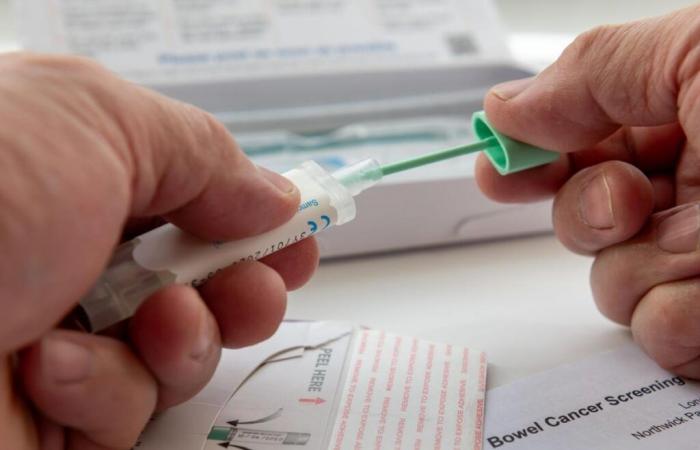Colorectal cancer is the most diagnosed in Spain if both sexes are taken into account. Last year, 41,167 people received the … News that they suffered this disease. Next year, according to the provisions of the Spanish Society of Medical Oncology (SEOM), the figure will continue to increase to 44,573 new cases, specifically 30,311 of colon and 14,262 straight.
But the most striking of this cancer is not so much its prevalence, but the survival rate it has. Nine out of ten people could overcome it if it is detected in time. However, it has the second highest mortality rate, only surpassed by lung.
The causes of the increase in its incidence is being studied in people under 50, as shown in the latest finding presented by the CNIO, which speaks of a bacterial infection in childhood as a possible trigger for this cancer at an early age.
While scientific research advances in this and other senses, medicine already has an instrument that has been proven effective to detect early, even when there is still no symptoms, the presence of this cancer. “It is one of the few that can be diagnosed before there is any symptoms in people,” they point out from the Spanish association against Cancer.
How can I do the test?
The test consists of a hidden blood detection test (TSOH). The presence of this in deficiency is one of the first symptoms of cancer and is not always visible. Hence the importance of the test.
Scientific evidence has shown that early detection through screening programs decreases short-term mortality by 30-35 %. The paradox is that only 42% of the Diana population undergoes this screening in Spain, well below the 65% recommended by experts
“It is easy to perform, simple and painless that it is recommended to do it as part of the colorectal cancer screening every 2 years to the population of risk (men and women aged 50 to 69),” they explain from the aforementioned association.
Precisely, these citizens are those that are included in the early detection program – or screening – that offers Health in Spain and invites the Diana population to do it through a communication that starts from the Autonomous Health Service on duty.
Those who have a family history, hereditary syndromes or other digestive problems can also be carried out, even if they do not receive communication for not being age. In this case, family doctors would be adequate to start the protocol.
How is it done?
Once the communication has been received, in the case of the screening, patients receive a kit to be tested at home. You only need a couple of minutes. To collect the stool samples, a baston is used that must then be saved in its tube (in the popular antigens test of the COVID) and deliver it to the laboratory as soon as possible. It only endures three days in the fridge and it is recommended not to do it with active bleeding by menstruation or hemorrhoids.
Experts remember that this test does not diagnose colorectal cancer, but detects hidden blood. If the result is positive, it is subsequently complemented by a colonoscopy for an accurate diagnosis of the state of the colon. “Biopsies are also performed if necessary,” they add from the AECC.
This procedure allows the disease to be detected in its most early stages, when you can act with less aggressive treatments.
What treatments exist?
With respect to the latter, the approach to the disease will depend on the progress shown by the tumor. From the AECC they perform the following classification:
Stadium I: Treatment is surgical. Surgery in the tumor area and, if necessary, in the affected neighboring organs.
Stage II: Surgery is also chosen. However, patients with a high risk of relapse receive a complementary adjuvant systemic treatment, such as chemotherapy.
Stage III: Surgery is insufficient to get the cure, therefore, except contraindications, in all cases a systemic adjuvant treatment should be performed.
Stage IV: In this phase, systemic treatments are the most important.
When the patient ends the treatment of colon cancer, he must perform periodic reviews (especially during the first 2 or 3 years after diagnosis), with the aim of evaluating their status, controlling side effects and, in case the cancer reappears, start a new treatment as quickly as possible.






